 Copyright © Michael Richmond.
This work is licensed under a Creative Commons License.
Copyright © Michael Richmond.
This work is licensed under a Creative Commons License.
Displacement, velocity, acceleration
- Kinemetics is the description of motion;
it concerns only the accurate description of the positions
of objects, and the change in their positions.
It does not deal with the sources of their motion;
we'll discuss dynamics in a few weeks.
- Displacement is a vector which points
from the initial position of an object to its final position.
The standard units of displacement are meters.
- Velocity is a vector which shows the direction
and rate of motion.
The standard units of velocity are meters per second.
- Speed and velocity are not the same thing:
speed is a scalar, whereas velocity is a vector.
One must use different rules when combining speeds
and combining velocities.
- The average velocity of an object is the total displacement
during some extended period of time, divided by that period
of time.
- Instantaneous velocity, on the other hand, describes the
motion of a body at one particular moment in time.
- Acceleration is a vector which shows the direction
and magnitude of changes in velocity.
Its standard units are meters per second per second,
or meters per second squared.
- Average acceleration is the total change in velocity (magnitude
and direction) over some extended period of time, divided
by the duration of that period.
- Instantaneous acceleration is the rate and direction at which
the velocity of an object is changing at one particular moment.
- In everyday English, we use the term decelerate to describe
the slowing of a body, but physicists use the
word accelerate to denote both positive and
negative changes in speed.
Viewgraphs
 Copyright © Michael Richmond.
This work is licensed under a Creative Commons License.
Copyright © Michael Richmond.
This work is licensed under a Creative Commons License.
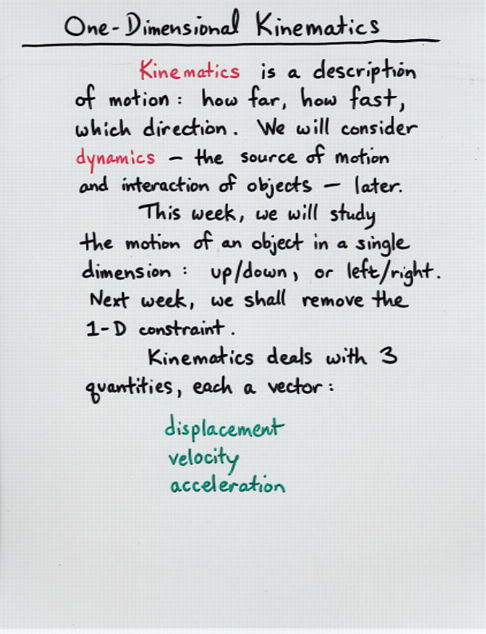
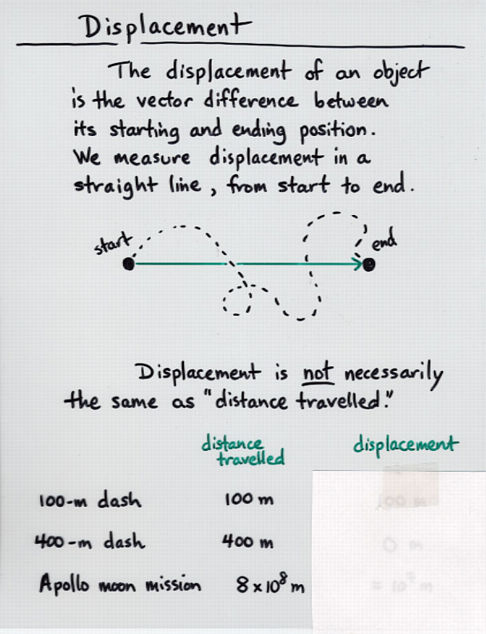
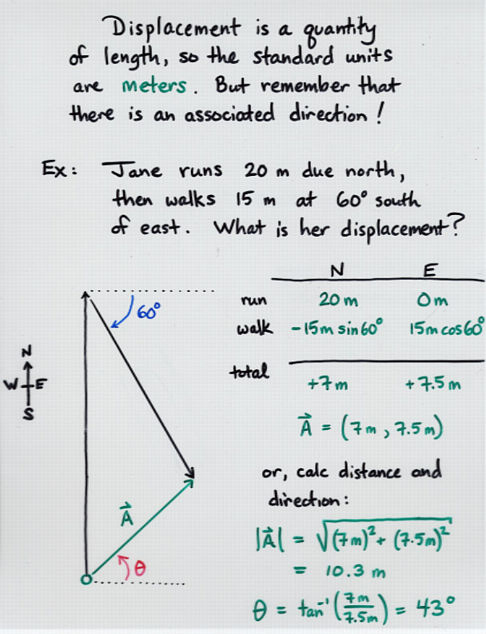
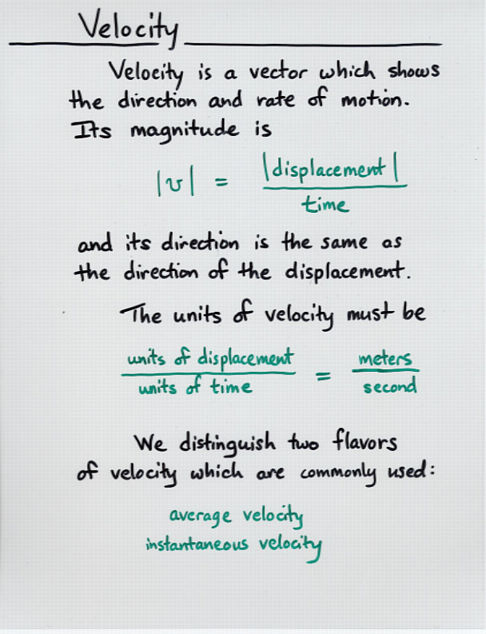
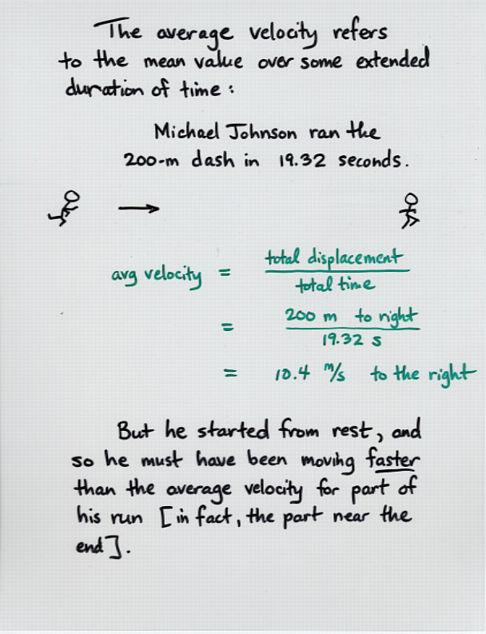
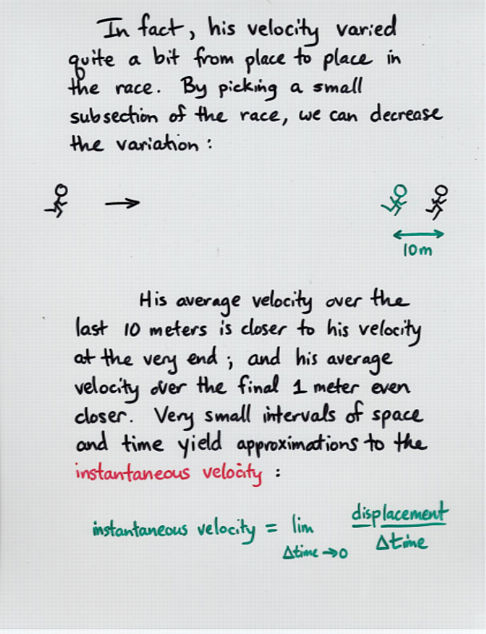
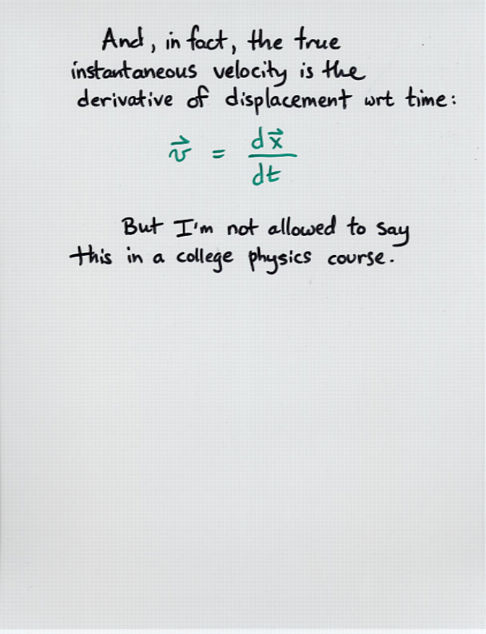
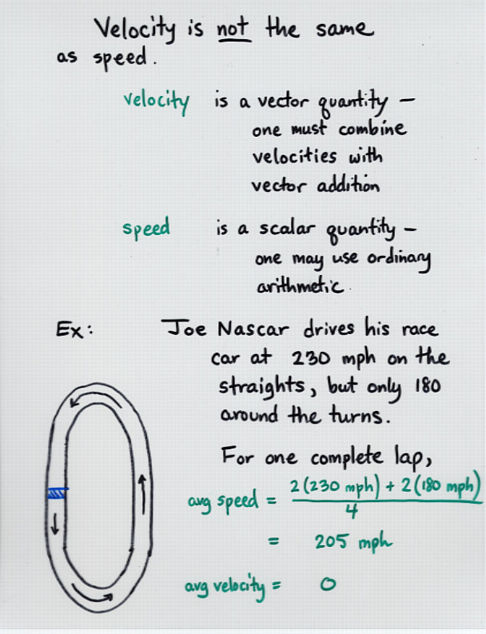
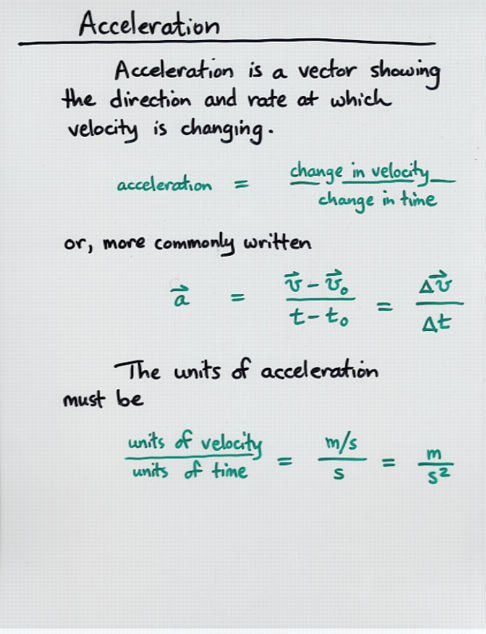
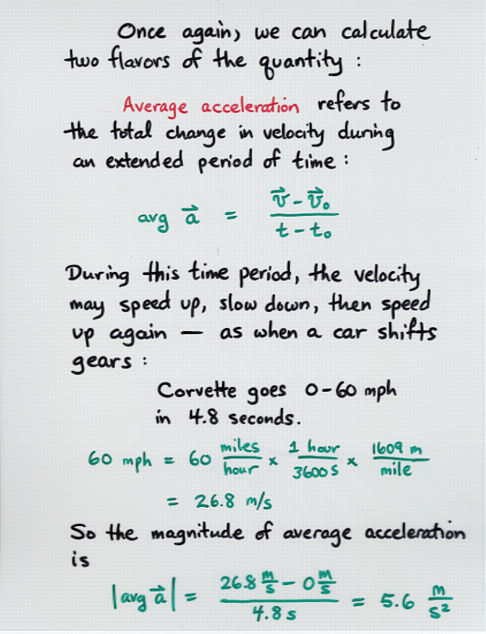
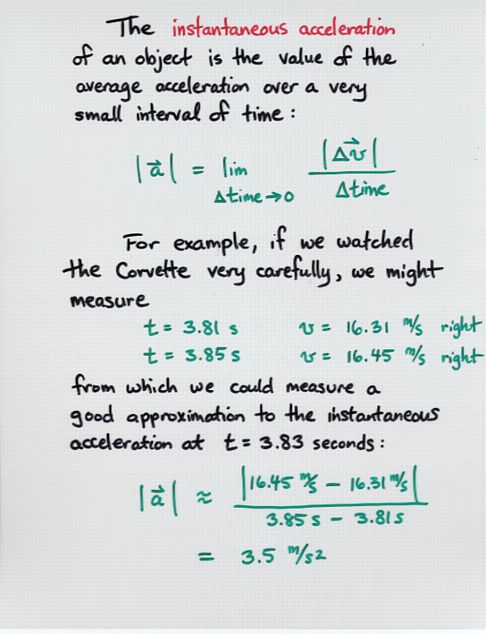
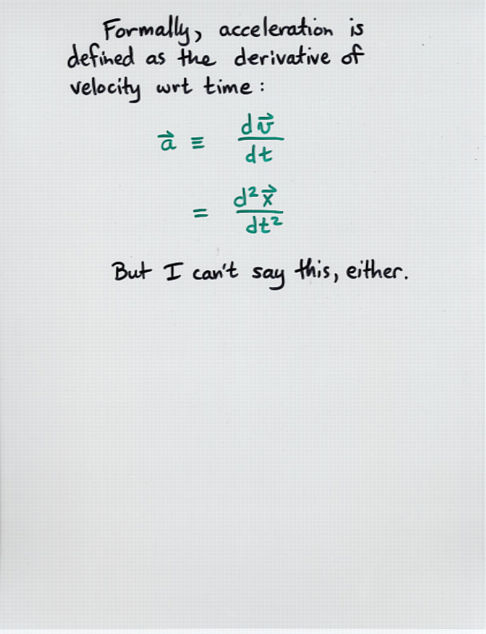
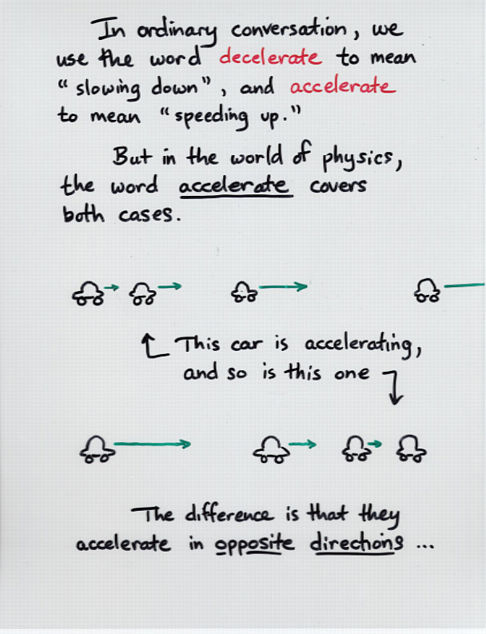
 Copyright © Michael Richmond.
This work is licensed under a Creative Commons License.
Copyright © Michael Richmond.
This work is licensed under a Creative Commons License.













 Copyright © Michael Richmond.
This work is licensed under a Creative Commons License.
Copyright © Michael Richmond.
This work is licensed under a Creative Commons License.